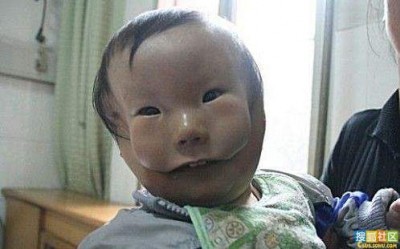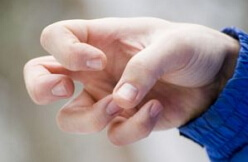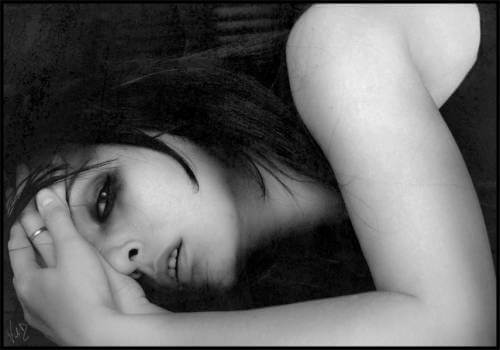Moebius syndrome: what is it, symptoms (photo), treatment
Content
- What is Moebius Syndrome?
- Signs and symptoms
- Causes
- Affected populations
- Similar disorders
- Diagnostics
- Treatment
- Forecast
What is Moebius Syndrome?
Moebius syndrome (congenital facial diplegia) is a rare neurological disorder characterized by weakness or paralysis of multiple cranial nerves, most often the 6th (abducens) and 7th (facial) nerve. Other cranial nerves are sometimes affected. The disorder is present at birth (congenital).
If the 7th nerve is involved, the person with Moebius Syndrome cannot smile, frown, wrinkle their lips, raise their eyebrows, or close their eyelids. If the 6th nerve is affected, the eye is unable to turn outward beyond the midline. Other abnormalities include underdevelopment of the pectoral muscles and limb defects.
Moebius syndrome does not progress. The exact reason is unknown. The syndrome appears to occur randomly (sporadically) in most cases; however, some cases occur in families, suggesting that there may be a genetic component.
Signs and symptoms

The disorders and severity of Moebius syndrome vary greatly from person to person. Classically accepted diagnostic criteria include:
- Facial paralysis or weakness affecting at least one but usually both sides of the face (7th cranial nerve)
- paralysis of lateral eye movement (6th cranial nerve);
- preservation of vertical eye movements.
Less commonly, other cranial nerves may be affected, including the 5th, 8th, 9th, 10th, 11th, and 12th.
Children with Moebius Syndrome may drool excessively and have squint. Since the eyes do not move from side to side (lateral direction), the child is forced to turn his head to follow the objects. Babies who lack facial expressions are often described as being in "masks" (see. photo below), which is especially noticeable when laughing or crying.

Affected children may also have feeding problems, including problems with swallowing and poor sucking. Also, corneal ulcers can occur because the eyelids remain open during sleep.
There are many additional deviations. Some children with Moebius syndrome have a short, malformed tongue and / or an abnormally small jaw (micrognathia). May also be present cleft palate. These disorders contribute to difficulty in eating and breathing. Children with cleft palate prone to ear infections (medium otitis). There may be anomalies of the outer ear, including underdevelopment of the outer ear (microtia) or the complete absence of the outer ear (anotia). If the 8th cranial nerve is affected, there is a chance of hearing loss. Dental abnormalities are not uncommon. Some affected children have speech problems and speech delays.
Defects in the development of the skeleton of the limbs are found in more than half of children with Moebius syndrome. Lower limb malformations include clubfoot and underdevelopment of the legs; the upper extremities may show webbing of the fingers (syndactyly), underdevelopment or absence of fingers and / or underdevelopment of the hands. Some children may have a pathological curvature of the spine (scoliosis), a about 15% patients also experience underdevelopment of the pectoral muscles and chest on one side of the body.
Read also:Serotonin Syndrome
Some affected children have a delay in reaching certain milestones, such as crawling or walking, most likely due to upper body weakness; however, most children end up catching up. Moebius syndrome is rarely associated with minor mental retardation. Some children have been classified as having autism spectrum disorder. The exact link between Moebius syndrome and autism is unknown.
Several studies have shown that autism spectrum disorders are more common in children with Moebius syndrome; other studies have not confirmed this and suggest that any such relationship is overstated.
Moebius syndrome is often associated with a variety of social and psychological consequences. Lack of facial expressions and inability to smile can cause bystanders to misinterpret what the sick person is thinking or feeling. Although clinical anxiety and depression Not common in children and adolescents with Moebius Syndrome, those affected may avoid social situations out of fear and frustration.
Causes
Most cases of Moebius syndrome occur accidentally for reasons unknown to doctors (sporadically) in the absence of a family history of the disorder. Sporadic gene mutations PLXND1 and REV3L have also been identified in a number of patients and have been confirmed to elicit a set of results consistent with Moebius syndrome when administered to animals.
There are also rare cases reported in families. Most likely, Moebius syndrome is a multifactorial pathology, which means that genetic and environmental factors play a specific causal role. It is possible that in different cases there are different reasons (heterogeneity).
In familial cases, there is evidence that Mobius syndrome is inherited as an autosomal dominant trait. Dominant genetic disorders occur when only one copy of an abnormal gene is needed for a disease to appear. The abnormal gene can be inherited from either parent, or it can be the result of a new mutation (gene change) in the affected person. The risk of passing the abnormal gene from the affected parent to the offspring is 50% for each pregnancy, regardless of the sex of the child.
The spectrum of findings in Möbius syndrome is indicative of a hindbrain malformation. Several different theories have been proposed to explain the cause of Mobius syndrome. One of the hypotheses is that the disorder is the result of impaired or interrupted blood flow (ischemia) to the developing fetus during pregnancy (intrauterine). Recent research suggests that a lack of blood affects certain areas of the lower brainstem, which contain the nuclei of the cranial nerves. This lack of blood flow can be due to an environmental, mechanical, or genetic cause. However, the cause of the syndrome remains unclear and more basic and clinical research is needed.
Read also:Asperger's syndrome - signs, symptoms, treatment, diagnosis
Affected populations
Moebius syndrome affects men and women in equal numbers. The disorder is present at birth. The exact frequency and prevalence of Moebius syndrome are unknown. One estimate is that the incidence in the United States is 1 in 50,000 live births.
Similar disorders
Symptoms and signs of the following disorders may be similar to those of Moebius syndrome. Comparisons can be useful for differential diagnosis.
Several investigators have reported cases where signs of Moebius syndrome occur in association with syndrome of Poland. It is sometimes called Poland-Mobius syndrome. Poland syndrome is characterized by webbed fingers, missing or underdeveloped fingers or hands, and underdeveloped chest and chest muscles. Polish syndrome usually occurs on only one side of the body (ipsilateral).
There is debate in the medical literature as to whether Moebius syndrome, Poland syndrome, and Poland-Moebius syndrome represent three different disorders or three different manifestations of the same disorder.
Hereditary congenital facial paralysis characterized by isolated facial nerve palsy, and subgroups of the disease have other associated symptoms, including hearing loss and strabismus. Hereditary congenital facial palsy differs from Moebius syndrome in having a full horizontal gaze. HOXB1 mutations on chromosome 17q21 have been identified in patients with this pathology.
Human HOXA1 syndromes are rare disorders with complex neurological and systemic manifestations. The spectrum and types of clinical outcomes in patients with this disease vary greatly. Affected people have Duane Palsy (conjugate gaze palsy), which is characterized by limited lateral eye movement. Hearing loss, developmental delays, and a spectrum of internal carotid arteries and malformations of the spine have also been documented. Facial asymmetry and minor malformations of the outer ear are also sometimes present. Affected people may also show signs of cognitive and behavioral impairment, and some people have been classified as autism spectrum disorders.
There are other causes of congenital facial paralysis, in particular, microsomia of the hemisphere of the face and, possibly, birth trauma. There are also acquired types of facial paralysis. Melkersson-Rosenthal syndrome is characterized by sudden onset in childhood / adolescence, bilateral or unilateral facial weakness, chronic swelling of the face (especially lips) and frown language.
Other possible causes:
- infections such as Ramsay-Hunt syndrome;
- systemic and neurological disorders, including cerebral palsy, congenital muscular dystrophy, spinal muscular atrophy, Guillain-Barré syndrome, multiple sclerosis and autoimmune disorders;
- brain injury;
- tumor or damage to the brain stem.
Read also:Dementia in the elderly
Diagnostics
The diagnosis of Moebius syndrome is based on characteristic signs / symptoms, the patient's detailed history, and careful clinical evaluation. There are no diagnostic tests to support the diagnosis of Moebius syndrome. Additional special tests may be performed to rule out other causes of facial paralysis.
Treatment
There is no specific course of therapy for Mobius syndrome. Treatment for Moebius Syndrome focuses on treating a specific disorder in each individual. These children are usually handled by a multidisciplinary team, often at a craniofacial center. The specialists involved include:
- pediatricians;
- neurologists;
- plastic surgeons;
- ear, nose and throat specialists (otolaryngologists);
- orthopedists;
- dental specialists;
- speech therapists;
- hearing assessors and treatments (audiologists);
- vision specialists (ophthalmologists) and other healthcare professionals.
Corrective facial paralysis procedures include transplanting muscles and / or nerve grafts from another area of the face or body. An old procedure known as temporalis tendon transfer, involves taking the temporalis muscle, one of the muscles commonly used for chewing, and transferring it to corners of the mouth. This same type of surgery can also be used to improve the closure of the eyelids. If the paralysis is only on one side (unilateral), resort to the "transverse facial nerve transplant" option. The procedure involves removing the sensory nerve from the calf, attaching it to a branch of a functioning facial nerve on the normal side of the face, and then waiting until regenerating nerve fibers will cross on the face and reach the paralyzed side, linking it with the motor nerve of the fine muscle, transmitted to the face by the microvascular anastomosis.
The most recent procedure involves microvascular transfer of the thigh muscle to the face and the connection of the nerves that normally supply the masseter muscle. This surgery has shown remarkable results in terms of speech, facial mobility and self-esteem.
Physical therapy may be needed for people with a variety of orthopedic disorders. Occupational therapy can also be helpful, especially in patients with hand, finger, and toe abnormalities. Speech therapy may also be needed for some affected children. Strabismus is usually corrected with surgery, although some doctors recommend postponing these procedures as the condition sometimes improves with age. Surgery may also be necessary for various skeletal malformations affecting the limbs and jaw.
Forecast
There is no cure for Moebius syndrome. Despite the disorders that characterize the disorder, proper care and treatment of the syndrome gives many people a normal life expectancy.



